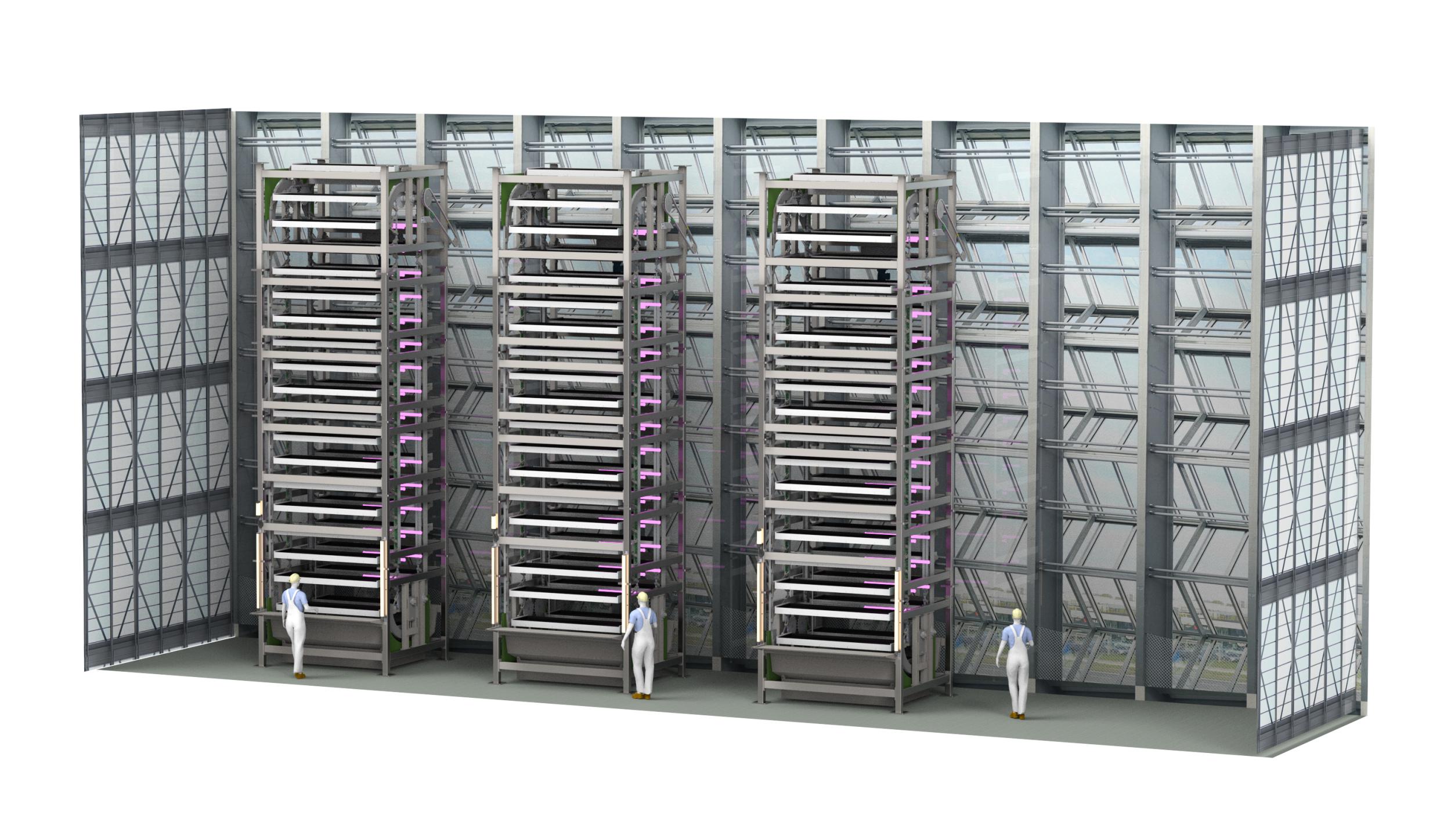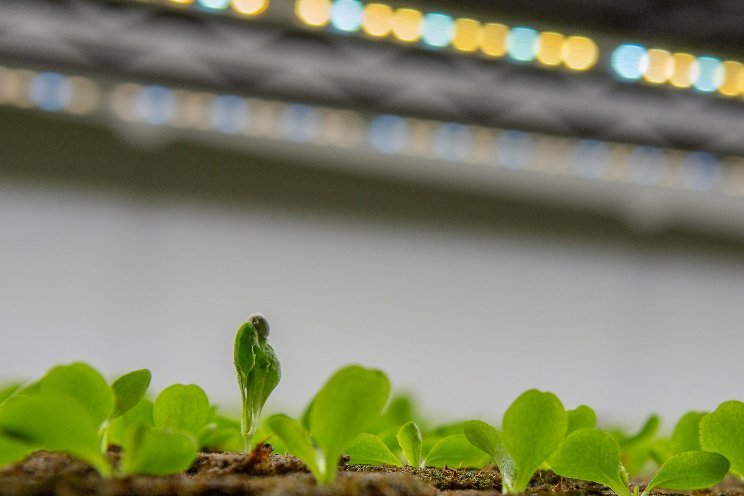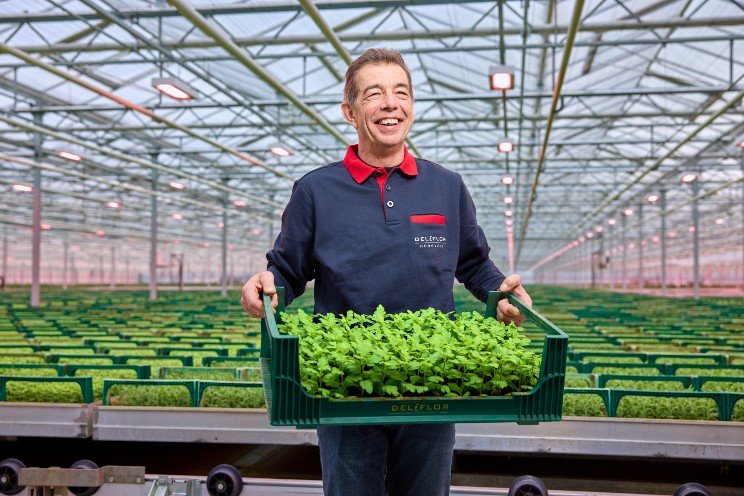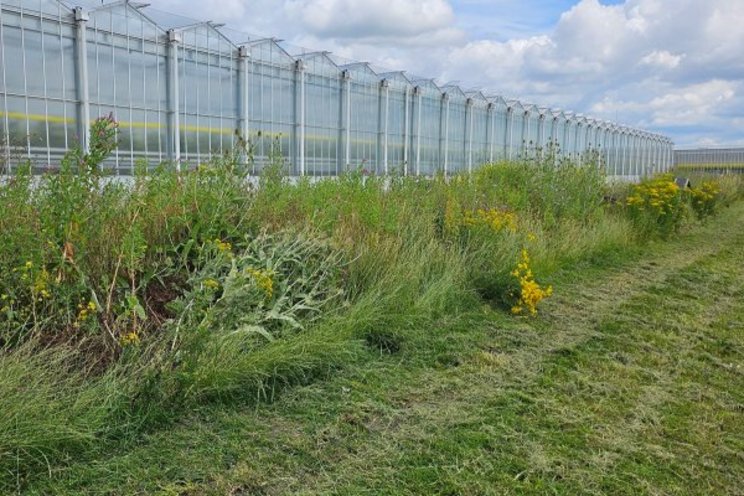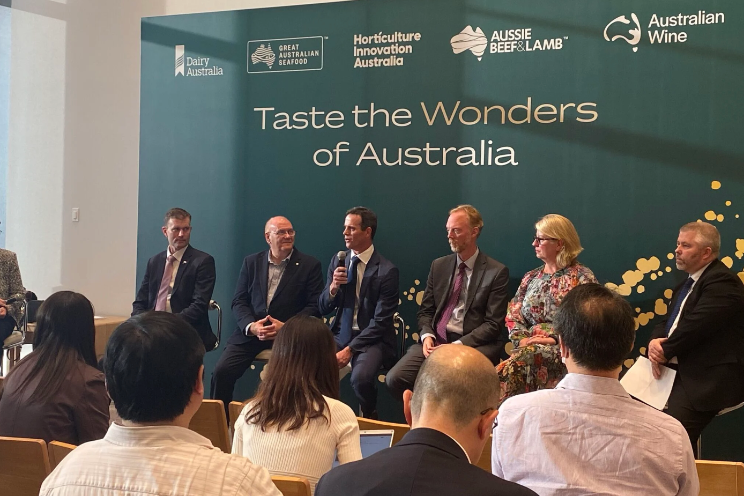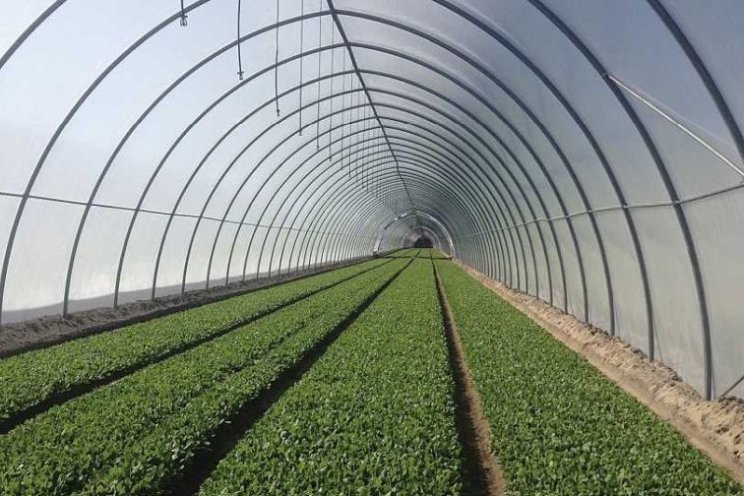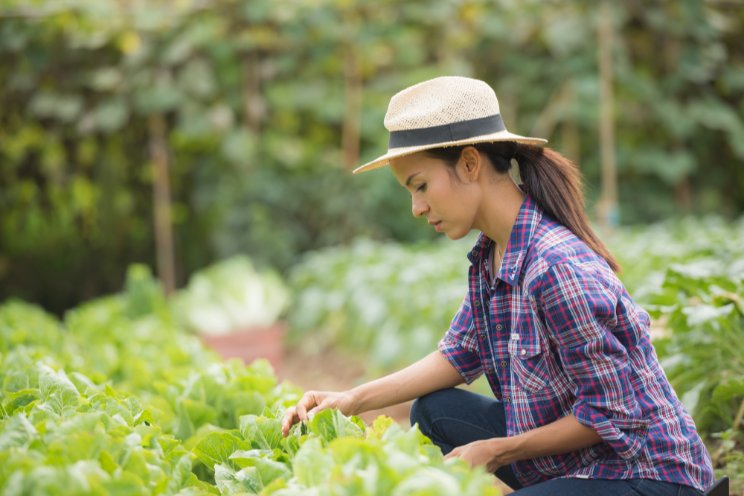Urban Crop Solutions transforms vertical horticulture
Added on 20 February 2024
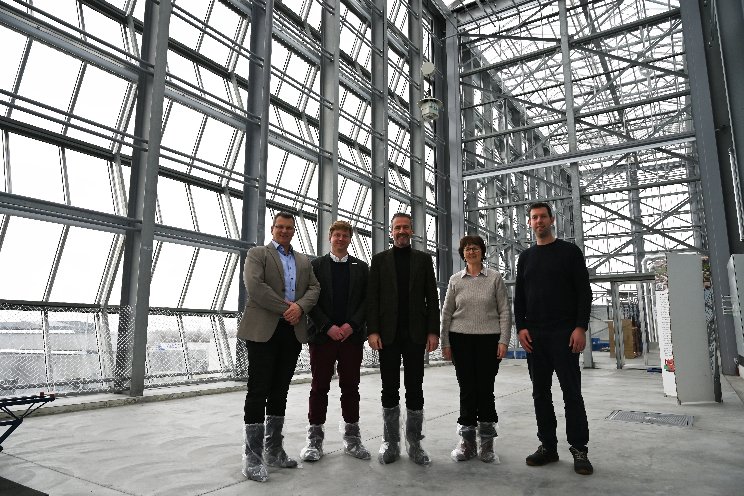
|
In 2021, Agrotopia, a pioneering research and demonstration greenhouse, opened on top of the REO Auction's crate warehouse in Roeselare (Belgium). Withan impressive 6000 m², Agrotopia now stands as the largest rooftop greenhouse in Europe. The research within Agrotopia focuses on the development of advanced cultivation techniques, including hydroponics and vertical horticulture. To realize an innovative multilayer cultivation system, a specific space has been allocated in the 12-meter-high vertical greenhouse of Agrotopia. The design and engineering, procurement and construction of this groundbreaking cultivationsystem have been entrusted to Urban Crop Solutions, marking a significantstride toward sustainable and efficient cultivation methods in the agricultural sector.
|
|
The vertical cultivation system will consist of three towers, each reaching 10 meters high, with 18 moving tables per tower. By cultivating ondifferent layers, optimal space utilization is achieved. This technique is particularly known in closed systems, where environmental factors can becontrolled, albeit at a high energy cost. This new cultivation system explores multilayer space utilization in the greenhouse and is designed to maximize the use of natural sunlight. To supplement light if necessary, the towers are equipped with dynamic lighting. Plant development can be influenced by adjusting the light spectrum of the LED lighting. This combination of greenhouse benefits with the precision of a closed system results in an innovative and sustainable cultivation environment with maximum flexibility. Construction of the installation commences in the first quarter of 2024, with completion scheduled for late 2024. Agrotopia comprises 13 different sections equipped with cultivationsystems for hydroponic leafy greens (MGS, DFT) and fruit vegetables (substratemats). Maarten Ameye, research leader for covered horticulture at Inagro, explains that the new vertical cultivation system will initially focus on leafygreens, strawberries, and sprouts. "We specifically target the cultivation techniques of crops crucial to greenhouse and urban horticulture, supporting our growers and stakeholders in these sectors. The knowledge gained will be translated into current systems and greenhouses to further innovate and sustain today's greenhouse farming. Based on the results, we can also provide advice for the practical implementation of such systems, both locally and internationally. After validation, the systems will be made available as a testplatform for technology developers and research institutions, enabling them to develop and leverage innovations in high vertical cultivation in collaboration with growers." "We are excited to collaborate with Inagro on this innovative project. Our shared goal is to push boundaries and promote sustainable agriculture. This partnership reaffirms our commitment to advanced technologies, flexibility in engineered solutions and integrating indoorfarming with the natural greenhouse environment," states Jean-Pierre Coene, CEO of Urban Crop Solutions. "This collaboration is a perfect example of how the public and private sectors can strengthen each other. Together we can offer innovative solutions that elevate agriculture to new heights in terms of sustainability and productivity," adds Bart Naeyaert, Deputy of the Province of West Flanders. “The use of such innovative multilayer cultivation installations is virtually non-existent today, except for a few experiments. Therefore, the system requires additional research concerning climate conditioning, irrigation, inspection, and control of the plant material, as well as user-friendliness. These aspects are incorporated into our joint research with partners ensuring also the contribution of academic expertise," says Maarten Ameye. In the Flemish urban landscape, agriculture, industry, recreation, nature, and urbanization vie for precious space, making the establishment of greenhouse farms challenging in urban or industrial areas as well as in ruralareas. The current surface area must be better utilized by increasing spatial efficiency. Investing in vertical cultivation and multiple space utilization can promote the integration of food production in cities and urbanized areas where space is limited. This concept also attracts considerable international interest. |
More news
